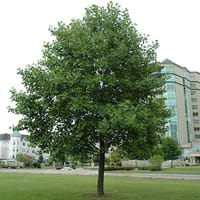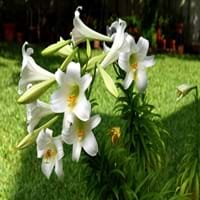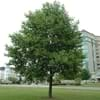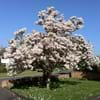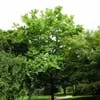Life Span
Perennial
Perennial
Type
Tree
Bulb or Corm or Tuber
Origin
Northeastern United States, Mid-Atlantic United States, Southeastern United States, Central United States
Japan
Types
Ardis, Arnold, Aureomarginatum
Madonna lily, Turk's cap lily
Habitat
Bluffs, low mountains, Moist Soils, Woodlands
Coastal Regions, Temperate Regions, Tropical regions
USDA Hardiness Zone
5-9
6-9
Sunset Zone
1a, 1b, 2a, 2b, 3a, 3b, 4, 5, 6, 7, 8, 9, 10, 11, 12, 14, 15, 16, 17, 18, 19, 20, 21, 22, 23
21,22
Habit
Pyramidal
Upright/Erect
Flower Color
Orange, Light Yellow
White, Light Yellow, Ivory
Flower Color Modifier
Bicolor
Bicolor
Fruit Color
Lime Green, Brown
Green, Brown
Leaf Color in Spring
Green, Light Green
Green, Dark Green
Leaf Color in Summer
Green
Light Green
Leaf Color in Fall
Yellow, Light Yellow, Yellow green
Several shades of Green
Leaf Color in Winter
Not Available
Light Green
Leaf Shape
Irregular
Oval
Plant Season
Spring, Fall
Summer
Sunlight
Full Sun, Partial Sun
Full Sun, Partial Sun, Partial shade
Growth Rate
Medium
Medium
Type of Soil
Clay, Loam
Loam, Sand
The pH of Soil
Acidic, Neutral
Neutral, Alkaline
Soil Drainage
Average
Well drained
Bloom Time
Late Spring
Summer
Tolerances
Soil Compaction
Heat Tolerance, Salt, Shade areas
Where to Plant?
Ground
Container, Ground, Pot
How to Plant?
Seedlings
Divison, From bulbs, Seedlings
Plant Maintenance
Low
Medium
Watering Requirements
Do Not over Water, Keep the ground moist but not water-logged, Requires regular watering
Average Water Needs, Do Not over Water, Never Over-water, Requires regular watering
In Summer
Ample Water
Lots of watering
In Spring
Moderate
Ample Water
In Winter
Average Water
Average Water
Soil pH
Acidic, Neutral
Neutral, Alkaline
Soil Type
Clay, Loam
Loam, Sand
Soil Drainage Capacity
Average
Well drained
Sun Exposure
Full Sun, Partial Sun
Full Sun, Partial Sun, Partial shade
Pruning
Prune ocassionally, Remove dead branches
Prune in winter, Remove dead branches, Remove dead leaves
Fertilizers
All-Purpose Liquid Fertilizer, fertilize in spring, Fertilize the soil instead of direct applying, Mulch
All-Purpose Liquid Fertilizer, Water soluble fertilizers
Pests and Diseases
fusarium canker, nectria canker, yellow-poplar weevil
Beetles, Red blotch, Sawfly Larvae, Slugs, Snails
Plant Tolerance
Soil Compaction
Heat Tolerance, Salt, Shade areas
Flower Petal Number
Not Available
Single
Foliage Texture
Coarse
Medium
Foliage Sheen
Matte
Glossy
Attracts
Birds
Beetles, Flying insects
Allergy
Not Available
Kidney Disease, Toxic
Aesthetic Uses
Showy Purposes
Beautification, Landscape Designing, Showy Purposes
Beauty Benefits
Not Available
Good for skin, Good for skin and hair, Improve hair condition, Improve skin condition
Environmental Uses
Shadow Tree, Shelter for wildlife
Air purification, Food for insects, Prevent Soil Erosion
Medicinal Uses
Arthritis, Digestion problems, Fever, Inflammation, Wounds
Not Available
Part of Plant Used
Whole plant
Flowers, Leaves
Other Uses
Food for animals, Grown for shade, Used as Ornamental plant, Used in Furniture
Decoration Purposes, Showy Purposes, Traditional medicine, Used as Ornamental plant
Used As Indoor Plant
No
Yes
Used As Outdoor Plant
Yes
Yes
Garden Design
Feature Plant, Shade Trees, Street Trees
Cutflower, Mixed Border
Botanical Name
LIRIODENDRON tulipifera
LILIUM longiflorum
Common Name
Tulip Poplar, Yellow Poplar
Easter Lily
In Hindi
ट्यूलिप पेड़
ईस्टर लिली
In German
Tulpenbaum
Osterlilie
In French
tulipier
lis de Pâques
In Spanish
árbol de tulipán
Lily Pascua
In Greek
δέντρο τουλίπα
Πάσχα Lily
In Portuguese
árvore de tulipa
Lily Páscoa
In Polish
tulipanowiec
Easter Lily
In Latin
Tulipa arbore
lilium
Phylum
Tracheophyta
Embryophyta
Class
Magnoliopsida
Liliopsida
Order
Magnoliales
Liliales
Family
Magnoliaceae
Liliaceae
Genus
Liriodendron
Lilium
Clade
Angiosperms, Magnoliids
Angiosperms, Monocots
Tribe
Not Available
Lilieae
Subfamily
Not Available
Lilioideae
Number of Species
Not Available
Importance of Tulip Tree and Easter Lily
Want to have the most appropriate plant for your garden? You might want to know the importance of Tulip Tree and Easter Lily. Basically, these two plants vary in many aspects. Compare Tulip Tree and Easter Lily as they differ in many characteristics such as their life, care, benefits, facts, etc. Every gardener must at least have the slightest clue about the plants he wants to plant in his garden. Compare their benefits, which differ in many ways like facts and uses. The medicinal use of Tulip Tree is Arthritis, Digestion problems, Fever, Inflammation and Wounds whereas of Easter Lily is Not Available. Tulip Tree has beauty benefits as follows: Not Available while Easter Lily has beauty benefits as follows: Not Available.
Compare Facts of Tulip Tree vs Easter Lily
How to choose the best garden plant for your garden depending upon its facts? Here garden plant comparison will help you to solve this query. Compare the facts of Tulip Tree vs Easter Lily and know which one to choose. As garden plants have benefits and other uses, allergy is also a major drawback of plants for some people. Allergic reactions of Tulip Tree are Not Available whereas of Easter Lily have Kidney Disease and Toxic respectively. Having a fruit bearing plant in your garden can be a plus point of your garden. Tulip Tree has no showy fruits and Easter Lily has no showy fruits. Also Tulip Tree is not flowering and Easter Lily is not flowering . You can compare Tulip Tree and Easter Lily facts and facts of other plants too.
